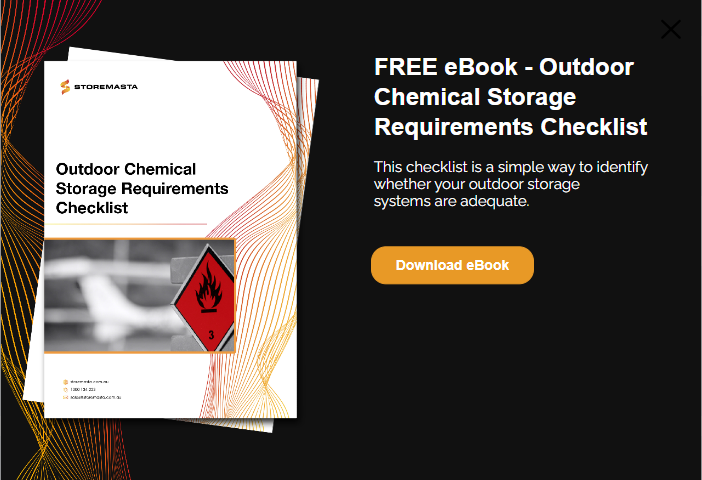If you’ve just purchased a flammable liquids store, or you’re considering relocating one, you require earthing to reduce risk at your work site. As stated in the Australian Standards for flammable and combustible liquids, Class 3 outdoor storage should be earthed to minimise the risk of electrical currents igniting the liquids and causing human harm. There are several factors to consider when installing and earthing your chemical store. In this post, we’ll lead you through the 4 essential steps of earthing your flammable liquid stores, so you can protect the people and property of your organisation.
But first, let’s look at the definition of earthing in relation to outdoor chemical storage containers.
What Is Earthing?
So, what exactly is earthing in relation to flammable liquids stores?
Earthing (or grounding) a flammable relocatable is the process of equipping the structure with a metal conductor to channel electrical currents into the earth below. When the chemical storage container is placed on site, or relocated to another position, the process of earthing must be implemented.
The process of earthing is common with electrical systems. Homes and businesses must have power supply systems (and some appliances) that are earthed to provide protection against a potentially fatal electrical charge.
Similarly, when you’re earthing a flammable store, you’re protecting your workplace against electrical currents and static electricity. We’ll talk more about this, specifically in relation to flammable liquids safety, in the next section of the blog.
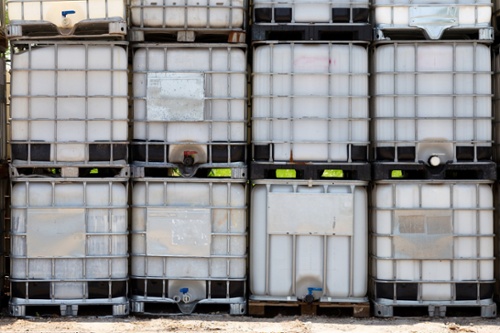
Controlling electrical currents and static electricity is vital when you’re working with Class 3 Flammable Liquids and storing them in the outdoor environment.
How Does Earthing a Flammable Store Reduce Risk?
By earthing your flammable liquids store you are reducing the risk of static electricity and electrical currents. This could be caused by a range of activities or incidents — from the decanting of flammable liquids creating a static charge to a stray bolt of lightning striking your workplace.
Earthing a chemical store involves the installation of a metal conductor into the base plate of the store. The metal rod will act as a conductor for electrical currents. This means that the rod will drive electrical currents away from the store and into the earth below.
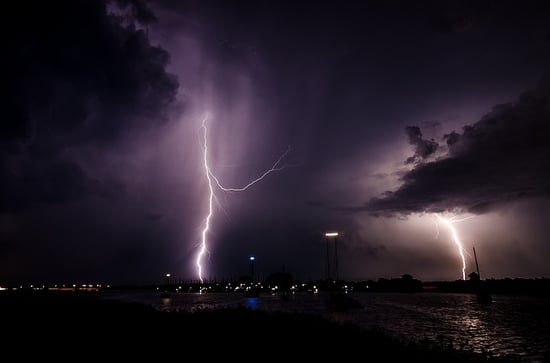
You can’t control nature, but you can reduce the risks associated with lighting strikes near your flammable liquids stores.
Why Do You Need To Earth Flammable Liquids Stores?
By storing flammable liquids in an earthed outdoor store, you’re providing a safer environment for your stored chemicals. This reduces the risk that flammable liquids pose to people, property and the environment.
When creating an earthing system for your chemical store, you are effectively discharging dangerous electrical currents into the ground. If the store was not earthed, these currents could spark the flammable vapours in the store, causing serious and devastating incidents such as fires and explosions.
Flammable liquids can become fire or explosion risks if any type of electrical current — including static electricity — causes the flammable vapours to ignite.
Flammable liquid fires are notoriously difficult to put out. These fierce fires are capable of engulfing buildings and neighbouring properties quickly, releasing plumes of harmful smoke and harmful vapours into the air.
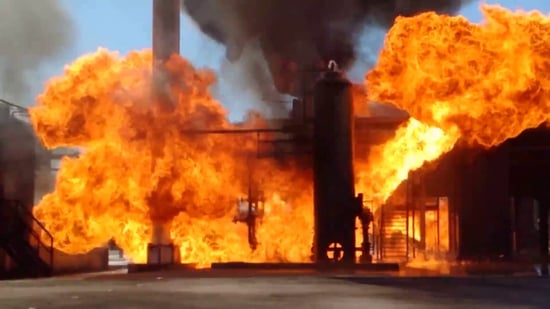
The key reason to earth your flammable liquids store is to prevent the ignition of flammable vapours which may be present in or around your store.
The earthing of the store also protects organisations from lighting strikes, which may hit the outdoor store in the event of a storm. While you can’t prevent lighting strikes from occurring, you can minimise the risks associated with the outdoor storage of flammable dangerous goods.
IMPORTANT: It’s vital that earthing is only performed on flammable liquids relocatable stores. Indoor flammable cabinets must not be earthed, as they are constructed in an entirely different way. Outdoor stores are chemical storage containers that are constructed from sheet metal. They can be earthed through the process of drilling and installation of the earth rod.
What Do The Australian Standards Say?
The Standard that applies to Class 3 liquids is AS 1940:2017 – The storage and handling of flammable and combustible liquids. Section 9.2.7.4 Earthing and bonding of the Standard is where you’ll find the requirements for the earthing and flammable chemical outdoor stores.
AS 1940:2017 explains that:
“Static electricity shall be controlled in accordance with AS/NZS 1020. Lightning protection shall comply with the requirements of AS/NZS 1768. Earthing shall comply with AS/NZS 3000.”
Earthing and Bonding
It’s also important to note how the Standard differentiates between the earthing of a store and the bonding of flammable liquids equipment. AS 1940:2017 explains that earthing and bonding should not be terms which are confused with each other.
While earthing discharges currents into the earth below the store, it doesn’t provide the continuous circuit required for bonding.
Bonding, on the other hand, is used to control static electricity. Bonding is the process where equipment, such as a flammable liquids tank, pump, nozzle and container, are all connected together (with bridged flanges, conducting transfer hoses and bonding wires and clips) to provide a continuous circuit.
Therefore, when there is the transfer of Class 3 Flammable Liquids, such as decanting flammable liquids from a drum into a jerry can, it’s imperative that the equipment is bonded in a compliant manner. Bonding will assist in minimising the risks associated with static electricity and flammable substances.
Furthermore, Safe Work Australia explains in their guide: Storage of flammable liquids, that engineering controls are required to control risk. This includes engineering controls to be built into the design of equipment, such as flammable liquids stores.
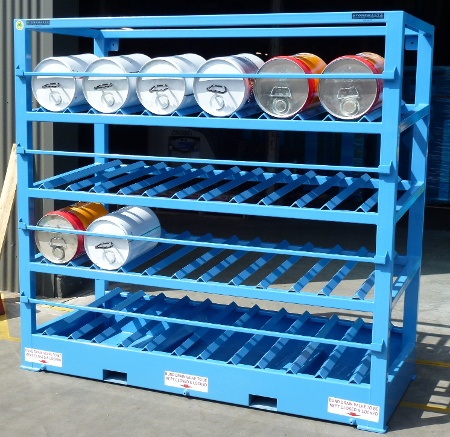
If you’re decanting flammable liquids, make sure that all equipment is bonded to prevent the ignition of the substances.
A key engineering control for flammable liquids stores is the provision of earthing and bonding. An accumulation of static electricity in or near the store could result in a spark which ignites any flammable vapours which may be present.
In addition to the earthing and bonding of your flammable liquids store and equipment, it’s also crucial that staff are well-trained in how to minimise spillage and flammable vapours. If Class 3 liquids aren’t stored correctly or they splash or leak into the work area, it increases the risk of these harmful vapours causing human harm, fire or explosion.
4 Steps To Earthing Your Outdoor Flammable Liquids Store
When your Storemasta flammable liquids relocatable arrives onsite, it will be equipped with items required to successfully earth the store. Follow these detailed instructions if you are considering earthing your flammable liquids storage container.
/How%20to%20store%20hazardous%20chemicals%20legally%20and%20safely-703474-edited.jpg?width=550&height=275&name=How%20to%20store%20hazardous%20chemicals%20legally%20and%20safely-703474-edited.jpg)
When you install your flammable liquids relocatable, make sure that you follow our 4 steps to complete the earthing system for your store.
- CHOOSE A LOCATION FOR THE EARTH ROD: The first step in the earthing process is to choose a practical position to install the earth rod. The rod should be installed less than or equal to 200mm from the front right hand base plate of the flammable store.
- DRILL A HOLE FOR THE EARTH ROD INSTALLATION: It’s now time to create a space for the earth rod to be installed into. Drill a 14mm hole through the hard surface at the desired position for the earth rod installation.
- DRIVE THE EARTH ROD INTO THE HOLE: Using a hammer, drive the earth rod into the hole that you’ve just drilled. Make sure that only 400mm of the earth rod is above surface.
- CONNECT THE WIRE: The last step marks the completion of your earthing system for your store. Connect the wire to the earth rod and the front right hand base plate of the store.
IMPORTANT: Earthing and bonding procedures should be included in the operating procedures of your flammable liquids store. Just like any type of handling or storage of flammable liquids, your staff must be trained and supervised when performing earthing to reduce the risk of human harm. Refer to Section 9.3.2 Operating procedures in AS 1940:2017 to learn more about the scope of your operating procedures.
Reducing Dangers Associated With Outdoor DG Storage
Remember, it’s important to regularly inspect and maintain your flammable liquids store to ensure that the steps that you’ve taken remain effective in chemical risk reduction. We suggest implementing a weekly checklist that can help your team ensure that all the necessary precautions are being taken when staff are operating your outdoor chemical store.
Would you like to learn more about how you can reduce the risks associated with the storage of Class 3 Flammable Liquids (and other dangerous goods) in the outdoor environment? We have a useful checklist that can assist you in determining your hazardous chemical storage needs.
Our checklist will guide you through all the key considerations for storing flammable liquids and dangerous goods in the outdoor environment, such as location, the segregation of liquids, security and labelling. You can grab your own copy of our outdoor chemical storage checklist today by simply clicking on the image below.
Joining the team as a Dangerous Goods Storage Consultant, Melissa Hampton became Storemasta's Marketing Manager in late 2021. With extensive knowledge and experience in chemical compliance, Melissa is responsible for leading the Marketing team and helping shape their marketing strategy. In her spare time, you can find Melissa hiking, swimming and enjoying the great outdoors in beautiful north-west Tasmania.
